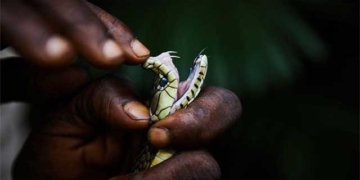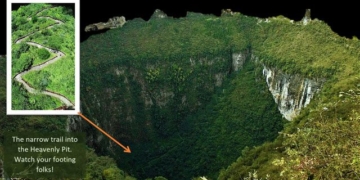Using data from the SOFIA aircraft, scientists have for the first time detected water on the surface of two silicate-rich asteroids named Iris and Massalia.
A team of scientists from the Southwest Research Institute (SwRI) reported on February 13, as noted by Interesting Engineering, that they discovered water molecules on the surface of asteroids. Utilizing data from the Stratospheric Observatory for Infrared Astronomy (SOFIA), they analyzed four silicate-rich asteroids captured by SOFIA’s Faint Object Infrared Camera for the SOFIA Telescope (FORCAST). They found that among these, the two asteroids Iris and Massalia exhibited mid-infrared spectral signatures indicating the presence of water molecules.

Simulation of SOFIA aircraft and water molecules on the surface of an asteroid. (Image: NASA/Carla Thomas/Southwest Research Institute).
Previously, scientists had found water molecules in asteroid samples, but this marks the first time they have been detected on the surface through such observations. The new study has been published in the journal Planetary Science.
“Asteroids are remnants from the planet formation process, and their composition varies depending on where they formed in the solar nebula. The distribution of water on asteroids is of particular interest as it may shed light on how water was delivered to Earth,” explained Dr. Anicia Arredondo at SwRI, the lead author of the new study.
The discovery of water on the two asteroids Iris and Massalia provides insights into the distribution of water in space, while also assisting scientists in the search for extraterrestrial life, both within and beyond the Solar System.
SOFIA had previously helped detect water molecules in one of the largest craters on the Moon. Using FORCAST, scientists found an amount equivalent to about 350 ml of water in one cubic meter of soil spread across the lunar surface.
In this new study, the SwRI team discovered that the amount of water on the asteroids is similar to that found on the Moon. “Similarly, on asteroids, water can also be bound to minerals or adsorbed into silicates, trapped, or dissolved in impact glass,” Arredondo noted.
After detecting water molecules on the two asteroids, the SwRI team aims to go further. They have scheduled observations with the James Webb Space Telescope of NASA to further study other asteroids. With the advanced instruments of James Webb, they hope to gain a better understanding of how water is distributed throughout the Solar System.




















































